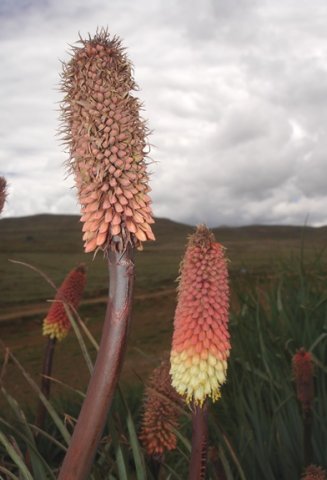Kniphofia caulescens hairy when budding

Author: Ivan Lätti
Photographer: Judd Kirkel Welwitch
The young Kniphofia caulescens raceme of dull red buds appears hairy from the long, narrow bract tips protruding among the buds. Largely underdeveloped, the buds still lack floral poise and readiness, little faces that only a mother could love. Things soon change as the lowest perianths in the hairy raceme are starting to illustrate. Something flowery could come of them all yet!
The last in the queue up top are among the wildest of bract hairiness, meaning unready for flowering. But they’re at least still alive, more than the mature raceme next door can offer regarding its upper echelon of tip florets. The outcome of growth is always the art of the possible. Organic development dictates: Make sure soonest of at least some flowers, fruits, seeds! Tomorrow cannot be trusted, so don’t wait with the first ones. Cope with now, service the first, the lowest, the already cream florets while the sun shines!
Their open perianths show exerted stamens first, delivering their pollen. Soon after, the even longer styles appear, needing pollen arriving from elsewhere by insect.
In this production hullabaloo of sequenced steps to fruit and seed, the last few stragglers at the top of the inflorescence may miss out, having to be sacrificed in the process of performing at best overall as a plant. One chance and life goes on (Manning, 2009; Pooley, 1998; iNaturalist).

